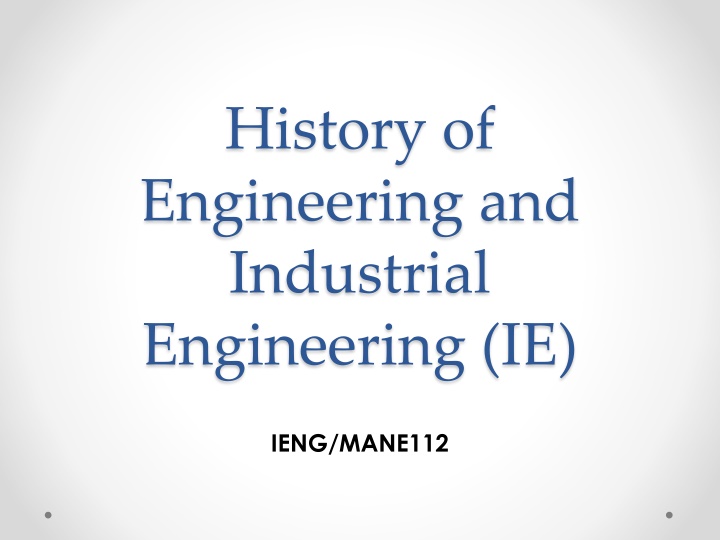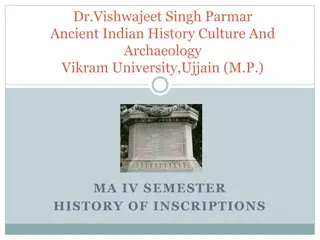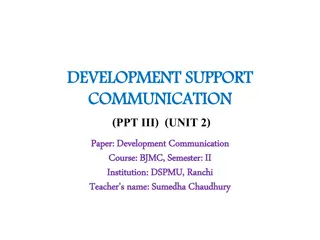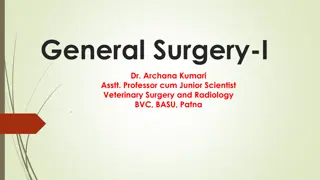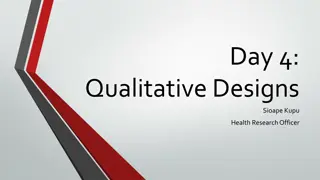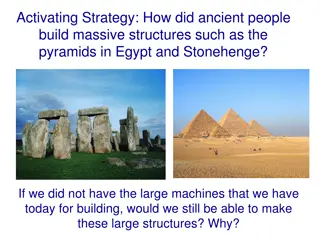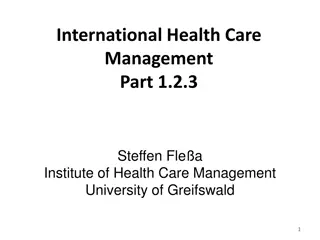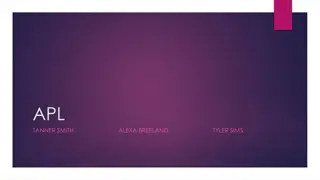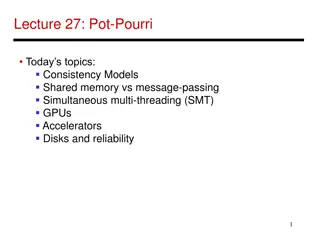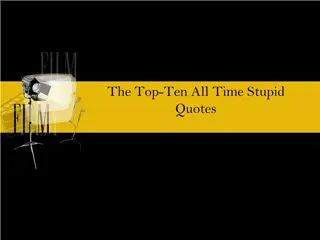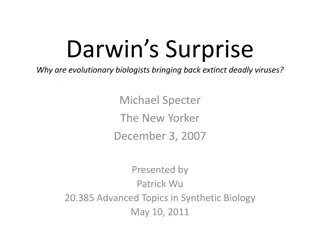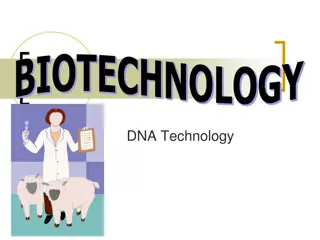Evolution of Engineering: From Ancient Innovations to Modern Paradigms
Explore the rich history of engineering from ancient times to the modern industrial revolution. Delve into the origins of the word "engineering," ancient inventions, the beginnings of engineering education in various countries, the paradigm of engineering, and the different types of engineers. Discover how engineering has evolved to solve complex problems and benefit mankind.
Download Presentation

Please find below an Image/Link to download the presentation.
The content on the website is provided AS IS for your information and personal use only. It may not be sold, licensed, or shared on other websites without obtaining consent from the author.If you encounter any issues during the download, it is possible that the publisher has removed the file from their server.
You are allowed to download the files provided on this website for personal or commercial use, subject to the condition that they are used lawfully. All files are the property of their respective owners.
The content on the website is provided AS IS for your information and personal use only. It may not be sold, licensed, or shared on other websites without obtaining consent from the author.
E N D
Presentation Transcript
History of Engineering and Industrial Engineering (IE) IENG/MANE112
1. Engineering 1.1 The origin of the word engineering Latin ingenium = clever invention Why a Latin word? English language = Saxonian (German) + Latin + Viking (Norwegian) + Normann In Hungarian engineer = m rn k, where m r = to measure (i.e. a verb) and m r + n k = the person who measures (French)
1.2 Engineering inventions in ancient times Melting copper, bronze, iron Wheel Screw Column, arch, Catapult Irrigation channel Pyramid Roads, bridge, aqueducts of Romans
1.3 Beginning of engineering education Country France USA England Cambridge (mechanical science) 1890 England Oxford (engineering science) Hungary College for Mining Hungary Institutum Geometricum Institute Year 1747 1802 cole des Ponts et Chaus es U.S. Military Academy 1909 1735 1782 The age 18thand 19thcentury is the time industrial revolution. That time the following equipment were invented: steam-engine, steam locomotive (Stevenson), automated loom.
1.4 The paradigm of engineering Engineers design machineries, products, systems, and processes. E.g. until the 18th century guns were made individually. In the Independence War of America an order of 10,000 guns was put. 10,000 guns cannot be produced on the same way as 1 gun. New production process was need. It is the origin of mass production. Assembly line is a further development of mass production. Engineering is the profession in which a knowledge of the mathematical and natural sciences gained by study, experience, and practice is applied with judgment to develop ways to utilize, economically the materials and forces of nature for the benefit of mankind. Engineers Council for Professional Development
The paradigm of engineering The engineering attitude to solve a problem: Simplify the problem as much that it still has its original meaning and solve the simplified problem (in an easy way). Typical example: rule of thumb. The attitude of the mathematician to solve a problem: Do not simplify it but try to make it even more complicated and solve the general problem. The notion of paradigm was introduced in Thomas Kuhn: The theory of scientific revolution
1.5 Types on engineers Originally engineers served the army constructing roads, bridges fortresses. Civil engineer is originally a non-military engineer. Further branches of engineering developed by differentiation: Electrical and electronic Mechanical Civil Industrial Chemical Aerospace Nuclear But many branches of natural and social sciences can be made as engineering. E.g. there are biological, environmental, and financial engineering.
1.6 Engineers in a company in all branches from marketing to R&D.
1.7 Engineering is a profession special knowledge, practice before starting the carrier, standards of the profession including a code of ethics are maintained by professional bodies, responsibility to (i) clients, (ii) other members of the profession, and (iii) to the society.
2.1 The definition of industrial engineering IE is concerned with the design, improvement, and installation of integrated systems of people, materials, information, equipment, and energy. It draws upon specialized knowledge and skill in the mathematical, physical, and social sciences together with the principles and methods of engineering analysis and design to specify, predict, and evaluate the results to be obtained from such systems. Institute of Industrial Engineers In short: IE organizes technological processes, i.e. production, and related services, e.g. transportation, distribution, etc, in the possible most economic way. Engineers do the thing, industrial engineers do better. In other words: IE helps to make decisions in industrial environment.
2.2 Areas related to IE 2.2.1 Operations Research (OR) Operations research, or operational research in British usage, is a discipline that deals with the application of advanced analytical methods to help make better decisions. http://en.wikipedia.org/wiki/Operations_research 2.2.2 Management Science (MS) MS deals with the same issues as IE and OR, however from the point of view of economics.
2.3 International organizations 2.3.1 Institute of Industrial Engineers (IIE) IIE is the global association of productivity and efficiency professionals specializing in industrial engineering, healthcare, ergonomics and other related professions. Our mission is to advance our profession through networking, training and knowledge sharing. http://www.iienet2.org/
International organizations 2.3.2 International Federation of Operational Research Societies (IFORS) is an umbrella organization comprising the national Operations Research societies of over forty five countries from four geogr aphical regions: Asia Pacific, Europe, North America, South America. http://ifors.org/web/
International organizations 2.3.3 Mathematical Optimization Society (MOS) The Mathematical Optimization Society (MOS), founded in 1973, is an international organization dedicated to the promotion and the maintenance of high professional standards in the subject of mathematical optimization. Up to 2010 its name was "Mathematical Programming Society (MPS)". http://www.mathopt.org/
International organizations 2.3.4 INFORMS The American society for OR which includes the former The Institute of Management Science . It has members all over the world.
Andrey Nikolaevich Kolmogorov 1903-1987, Tambov, Russia Father of modern probability "Every mathematician believes he is ahead over all others. The reason why they don't say this in public, is because they are intelligent people"
Andrey Nikolaevich Kolmogorov In 1922 Kolmogorov constructed a Fourier series that diverges almost everywhere, gaining international recognition. In 1925, he published his famous work in intuitionistic logic on the principle of the excluded middle. In 1929 Kolmogorov earned his Doctor of Philosophy degree, Ph.D., at the Moscow State University. His pioneering work About the Analytical Methods of Probability Theory was published (in German) in 1931. Also in 1931, he became a professor at Moscow University. In 1933, Kolmogorov published the book, Foundations of the Theory of Probability, laying the modern axiomatic foundations of probability theory. In 1939, he was elected a full member of the USSR Academy of Sciences. Around the same years (1936) Kolmogorov contributed to the field of ecology and generalized the Lotka-Volterra model of predator-prey systems.
Andrey Nikolaevich Kolmogorov In his study of stochastic processes (random processes), especially Markov processes, Kolmogorov and the British mathematician Sydney Chapman independently developed the pivotal set of equations in the field, the Chapman Kolmogorov equations. Later on, Kolmogorov changed his research interests to the area of turbulence, where his publications beginning in 1941 had a significant influence on the field. Kolmogorov died in Moscow in 1987."
William Edwards Deming 1900-1993, Washington, D.C, USA The only useful function of a statistician is to make predictions and thus to provide a basis for action
William Edwards Deming Deming was a pioneer of quality control. He was voted by business staff of the Los Angeles Times as being one of the 50 most influential business people of the century, though he described himself as 'Consultant in Statistical Studies'. He studied electrical engineering at University of Wyoming, graduating in 1921. As a summer job he worked for the Western Electric Company in Chicago where he encountered Shewhart's work on quality control. He obtained his MS in mathematics and mathematical physics from University of Colorado in 1925 and his PhD from Yale University in 1928. He began working first for the US Department of Agriculture and then for the US Bureau of the Census. In 1947 he spent three months in Japan helping with the Japanese census.
William Edwards Deming On his return to Japan in 1950 he gave an extended course in quality control; the course was so successful and influential that he was invited back on many occasions, being received by Emperor Hirohito and awarded the Second Order of the Sacred Treasure. He was President of the IMS in 1945. In 1955 he was awarded the Shewhart Medal of the ASQ, in 1983 the Wilks Award of the ASA, and in 1987 the National Medal for Technology. Deming's advocacy of the Plan-Do- Check-Act cycle, his 14 key principles for management for transforming business effectiveness, and Seven Deadly Diseases have had tremendous influence outside of manufacturing and have been applied in other arenas, such as in the relatively new field of sales process engineering.
Frederick Winslow Taylor 1856-1915, Philadelphia, Pennsylvania, USA Father of Scientific Management "It is not a question of producing physical changes, but rather of working a great mental revolution in large numbers of men, and any such change demands time, and a large amount of time."
Frederick Winslow Taylor U.S. inventor and engineer, the founder of modern Time Study. He introduced time-and-motion study in order to systematize shop management and reduce manufacturing costs. Taylor proposed that the work of each employee be planned out by the Management at least one day in advance. Taylor s attempt to create new ways of thinking and acting was one of his most significant contributions to the growing science of management. Much of the debate surrounding the adoption of Taylor's methods disappeared after the 1920s, but the method continued. The disappearance of the debate reveals a widespread acceptance of much of the power and authority that Taylorism had constructed.
Frederick Winslow Taylor The pressures of World War II, in fact, drove wider acceptance of scientific management and made Taylorism one of the most significant aspects of American (and much of the rest of the world's) social organization - connecting people through work and uniting their viewpoints around the perspective of efficient production. Taylor died in 1915 at the age of 59. His methods would be tried and applied to an endless range of activities, including education, military discipline, home economics, ergonomics, and medicine.
George Bernard Dantzig 1914-2005, USA Development of the Simplex Algorithm
George Bernard Dantzig American statistician George Bernard Dantzig affected the world enormously with the mathematical discovery of the Simplex Method. Devised by Dantzig in the late 1940s, this mathematical formula, or algorithm, is used by industry and governments to identify the best possible solutions to problems with many variables. The Simplex Method is useable in calculations that involve resource allocation, worker scheduling, and production planning. Airlines use the algorithm to coordinate routes for commercial flights and governments use it to schedule refuse collection. In addition, the Simplex Method is embedded on most computers through spreadsheet programs.
George Bernard Dantzig Dantzig also worked as an applied mathematics and statistics professor, producing more than 50 doctoral students, many of whom became leaders in their fields. Colleagues and former students remember Dantzig as a well-rounded thinker who was concerned not only with mathematical challenges but also with solving political, economic and household problems. Writing in OR/MS Today, former Dantzig student Mukund Thapa, who traveled from India to study at Stanford under Dantzig, said "the best times in my life were interactions with George." Thapa said Dantzig treated everyone as an old friend. Thapa recalled that Dantzig once worried that he was bothering the renters below him so he cut open some tennis balls and placed them on the legs of the tables and chairs in his dining room so as not to disturb the downstairs neighbors.
Henry Laurence Gantt 1861-1919, Calvert County, Maryland, USA Developing the Gantt Chart
Henry Laurence Gantt Developed simple graphs that would measure performance while visually showing projected schedules. These Gantt Charts were employed on major infrastructure projects including the Hoover dam and interstate highway system and continue to be an important tool in project management. Invented a Wage Payment system that rewarded workers for above-standard performance, eliminated any penalty for failure, and offered the boss a bonus for every worker who performed above standard. Emphasized Human Relations and promoted Scientific Management as more than an inhuman speed up of labor. The Gantt chart is still accepted as an important management tool today, it provides a graphic schedule for the planning and controlling of work, and recording progress towards stages of a project. The chart has a modern variation, Program Evaluation and Review Technique (PERT).
Henry Laurence Gantt Industrial Efficiency: Industrial efficiency can only be produced by the application of scientific analysis to all aspects of the work in progress. The industrial management role is to improve the system by eliminating chance and accidents. The Task and Bonus System: He linked the bonus paid to managers to how well they taught their employees to improve performance. The social responsibility of business: He believed that businesses have obligations to the welfare of the society in which they operate.
Lotfi Asker Zadeh 1924-2017- Baku, Azerbaijan Founder of Fuzzy Mathematics, Fuzzy Set Theory, and Fuzzy Logic IEEE Medal of Honor, ACM (Association for Computing Machinery) fellow
Lotfi Asker Zadeh Better known as Lotfi A. Zadeh, is a mathematician, electrical engineer, computer scientist, and a professor of computer science at the University of California, Berkeley. Zadeh was born in Baku, Azerbaijan, to an Iranian Azeri father from Ardabil, Rahim Aleskerzade, who was a journalist on assignment from Iran, and a Russian Jewish mother, Fanya Koriman, who was a pediatrician, Zadeh is quoted as stating: "The question really isn't whether I'm American, Russian, Iranian, Azerbaijani, or anything else. I've been shaped by all these people and cultures and I feel quite comfortable among all of them". Zadeh also notes in the same interview from which the above quote is taken: "Obstinacy and tenacity. Not being afraid to get embroiled in controversy. That's very much a Turkish tradition. That's part of my character, too. I can be very stubborn. That's probably been beneficial for the development of Fuzzy Logic.
Lotfi Asker Zadeh Because of the importance of the relaxation of Aristotelian logic, which opens up applicability of rational methods to the majority of practical situations without dichotomous truth values, Zadeh is one of the most referenced authors in the fields of applied mathematics and computer science, but his contributions are not limited to fuzzy sets and systems. Zadeh taught for ten years at Columbia University, was promoted to full professor in 1957, and has taught at the University of California, Berkeley since 1959. He published his seminal work on fuzzy sets in 1965, in which he detailed the mathematics of fuzzy set theory. In 1973 he proposed his theory of fuzzy logic.
Peter L. Hammer 1936-2006, Timisoara, Romania The father of the Boolean Function Theory
Peter L. Hammer He was one of the most influential researchers in the fields of Operations Research and Discrete Applied Mathematics. He made numerous major contributions to these fields, launching several new research directions. His results influenced hundreds of colleagues in discrete mathematics and operations research, and made a lasting impact on several areas, including binary optimization and algorithmic graph theory. His landmark book on Boolean Methods in Operations Research and Related Areas (co-authored with S. Rudeanu, 1968) founded the new area of pseudo-Boolean optimization. His systematic approach to study the combinatorial structure of Boolean functions, and their role in and relationship to optimization problems developed a whole new Theory of Boolean Functions (a book about this field, co-edited and co- authored with Y. Crama).
Peter L. Hammer He applied in novel ways Boolean techniques to other areas, including graph theory, integer programming, data analysis, and so forth. His application of such Boolean techniques to data analysis proved to be particularly novel and effective. The technique, called Logical Analysis of Data (LAD), was successfully applied to several real- life data analysis problems, including in the last few years numerous medical datasets. One of his final lectures was entitled "Why not to turn 70" and subtitled "Problems left for my second and third lives". This exemplified not only his humor, but also his relentless energy
Thomas L. Saaty Born in 1926-2017, Mosul, Iraq Developer of AHP (Analytic Hierarchy Process) method in decision making
Thomas L. Saaty American mathematician who is a Distinguished University Professor at the University of Pittsburgh, where he teaches in the Joseph M. Katz Graduate School of Business. He is the inventor, architect, and primary theoretician of the Analytic Hierarchy Process, a decision-making framework used for large-scale, multiparty, multi-criteria decision analysis, and of the Analytic Network Process, its generalization to decisions with dependence and feedback. Dr. Saaty has made contributions in the fields of operations research (parametric linear programming, epidemics and the spread of biological agents, queuing theory, and behavioral mathematics as it relates to operations), arms control and disarmament, and urban design.
Thomas L. Saaty He has written more than 30 books and 300 papers on mathematics, operations research, and decision making. Their subjects include graph theory and its applications, nonlinear mathematics, analytical planning, and game theory and conflict resolution. In 2008, he received the INFORMS Impact Prize for his development of the Analytic Hierarchy Process. The Impact Prize is awarded every two years to recognize contributions that have had a broad impact on the fields of operations research and the management sciences. Emphasis is placed on the breadth of the impact of an idea or body of research.
Maximilian Carl Emil Weber 1864 1920, Germany German political sociologist, one of the founders of modern study of sociology and public administration
Maximilian Carl Emil Weber He began his career at the University of Berlin, and later worked at the universities of Freiburg, Heidelberg, and Munich. Weber's major works deal with rationalization in sociology of religion and government. His most famous work is his essay The Protestant Ethic and the Spirit of Capitalism, which began his work in the sociology of religion. In this work, Weber argued that religion was one of the non-exclusive reasons for the different ways the cultures of the Occident and the Orient have developed, and stressed importance of particular characteristics of ascetic Protestantism which led to the development of capitalism, bureaucracy and the rational- legal state in the West.
Maximilian Carl Emil Weber In another major work, Politics as a Vocation, Weber defined the state as an entity which claims a monopoly on the legitimate use of physical force, a definition that became pivotal to the study of modern Western political science. His analysis of bureaucracy in his Economy and Society is still central to the modern study of organizations. His most known contributions are often referred to as the 'Weber Thesis' His most valued contributions to the field of economics are his famous work, The Protestant Ethic and the Spirit of Capitalism. This is a seminal essay on the differences between religions and the relative wealth of their followers.
Richard Muther Born in 1913- 2018. Newton, Massachusetts, USA Father of Systematic Planning Developed many basic techniques used in Plant Layout, Material Handling, and other aspects of Industrial Engineering
Richard Muther He was the original developer of relationship chart (REL- CHART) and its companion space-relationship diagram. This tool is the basis for many other techniques which are used to optimize the proximity of related functions and minimize unnecessary transportation in industrial facilities. He also created the Mag Count method of measuring the difficulty of handling (transporting) any solid material prior to knowing how it will be moved. He developed the industry-standard color code used to classify industrial space and the related type-of-work symbols. Corresponding black-and-white hatch patterns based on the heraldic tincture code are also part of his methodology.
Henry Ford 1863 1947, U.S.A The American founder of the Ford Motor Company and father of modern assembly lines used in mass production
Henry Ford His introduction of the Model T automobile revolutionized transportation and American industry. He was a prolific inventor and was awarded 161 U.S. patents. As owner of the Ford Motor Company, he became one of the richest and best-known people in the world. He is credited with "Fordism", that is, the mass production of large numbers of inexpensive automobiles using the assembly line, coupled with high wages for his workers. Ford had a global vision, with consumerism as the key to peace. Ford did not believe in accountants; he amassed one of the world's largest fortunes without ever having his company audited under his administration.
Henry Ford Henry Ford's intense commitment to lowering costs resulted in many technical and business innovations, including a franchise system that put a dealership in every city in North America, and in major cities on six continents. Ford left most of his vast wealth to the Ford Foundation but arranged for his family to control the company permanently.
Agner Krarup Erlang 1878 1929, Denmark Danish mathematician, statistician and engineer, who invented Queuing Theory and the fields of traffic engineering
